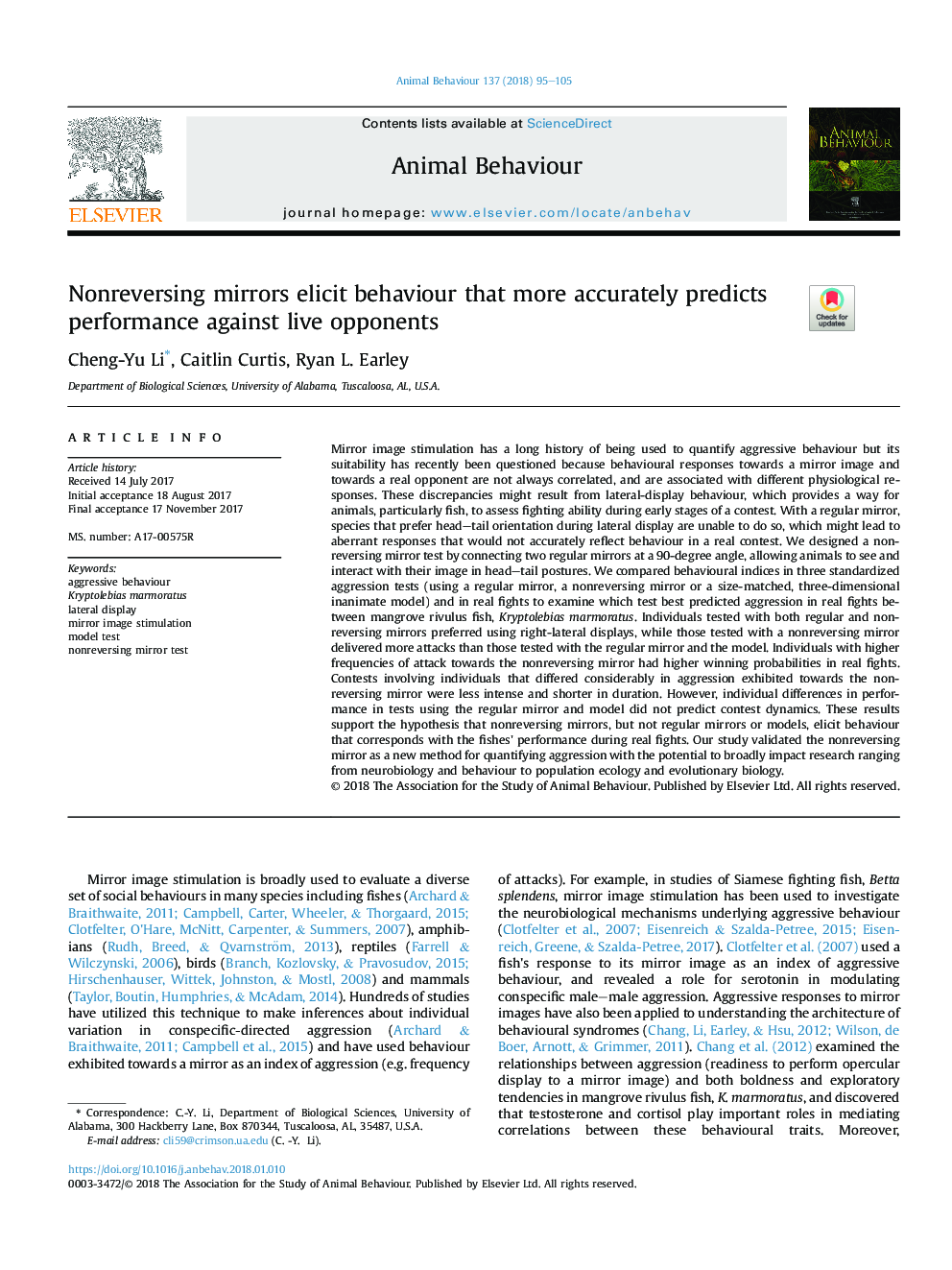| کد مقاله | کد نشریه | سال انتشار | مقاله انگلیسی | نسخه تمام متن |
|---|---|---|---|---|
| 8488630 | 1552191 | 2018 | 11 صفحه PDF | دانلود رایگان |
عنوان انگلیسی مقاله ISI
Nonreversing mirrors elicit behaviour that more accurately predicts performance against live opponents
ترجمه فارسی عنوان
آینه های غیرقابل برگشت باعث می شود که رفتار دقیق تر نسبت به مخالفان زنده پیش بینی شود
دانلود مقاله + سفارش ترجمه
دانلود مقاله ISI انگلیسی
رایگان برای ایرانیان
موضوعات مرتبط
علوم زیستی و بیوفناوری
علوم کشاورزی و بیولوژیک
علوم دامی و جانورشناسی
چکیده انگلیسی
Mirror image stimulation has a long history of being used to quantify aggressive behaviour but its suitability has recently been questioned because behavioural responses towards a mirror image and towards a real opponent are not always correlated, and are associated with different physiological responses. These discrepancies might result from lateral-display behaviour, which provides a way for animals, particularly fish, to assess fighting ability during early stages of a contest. With a regular mirror, species that prefer head-tail orientation during lateral display are unable to do so, which might lead to aberrant responses that would not accurately reflect behaviour in a real contest. We designed a nonreversing mirror test by connecting two regular mirrors at a 90-degree angle, allowing animals to see and interact with their image in head-tail postures. We compared behavioural indices in three standardized aggression tests (using a regular mirror, a nonreversing mirror or a size-matched, three-dimensional inanimate model) and in real fights to examine which test best predicted aggression in real fights between mangrove rivulus fish, Kryptolebias marmoratus. Individuals tested with both regular and nonreversing mirrors preferred using right-lateral displays, while those tested with a nonreversing mirror delivered more attacks than those tested with the regular mirror and the model. Individuals with higher frequencies of attack towards the nonreversing mirror had higher winning probabilities in real fights. Contests involving individuals that differed considerably in aggression exhibited towards the nonreversing mirror were less intense and shorter in duration. However, individual differences in performance in tests using the regular mirror and model did not predict contest dynamics. These results support the hypothesis that nonreversing mirrors, but not regular mirrors or models, elicit behaviour that corresponds with the fishes' performance during real fights. Our study validated the nonreversing mirror as a new method for quantifying aggression with the potential to broadly impact research ranging from neurobiology and behaviour to population ecology and evolutionary biology.
ناشر
Database: Elsevier - ScienceDirect (ساینس دایرکت)
Journal: Animal Behaviour - Volume 137, March 2018, Pages 95-105
Journal: Animal Behaviour - Volume 137, March 2018, Pages 95-105
نویسندگان
Cheng-Yu Li, Caitlin Curtis, Ryan L. Earley,
